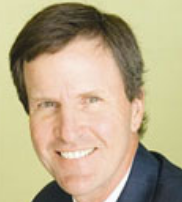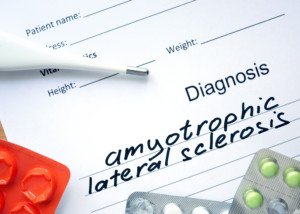Those who fear having ALS may notice that one calf has less muscle than the other and worry this means atrophy and the beginning of a fatal journey.
In a disease such as ALS, one limb may appear atrophied while the other doesn’t.
Muscle wasting from ALS does not occur at the exact same rate on each side of the body.
If lately you’ve been worrying sick over the idea of having ALS, chances are pretty high that this anxiety has its origins in some innocent googling that you did one day – perhaps because you felt some twitching or cramping in your calves.
You then began looking at both calves in the mirror, conducting lengthy visual comparisons, even going as far as measuring their circumference with a tape measure to get an objective size.
One calf not only looks smaller, but it IS smaller – as confirmed with the tape measure.
One Calf Is Smaller: Muscle Atrophy or Natural Asymmetry?
“Activity levels and age both affect muscle structure,” says J. Mark Anderson, MD, DABFM, of Executive Medicine of Texas and who is board certified in family medicine.
“The body is symmetrical, for the most part, but not always and not exactly,” continues Dr. Anderson.
“People may notice that one calf muscle is developed more than another.
“This is not necessarily a sign of atrophy, especially if there is no weakness or change in feeling.”
Most Likely Causes of One Calf Being Smaller in the Absence of Weakness
Dr. Anderson explains, “It may simply be due to the way a person stands, placing more weight on one leg over another.
“It may also be that one side is being strengthened more than the other during exercise.” The fitness enthusiast may be unaware of this.
When I was a personal trainer, I witnessed uneven training all the time. I once had a client who, despite my repeated verbal feedback, kept performing the back squat crookedly, leaning towards one side.
Though crooked back squats won’t likely cause one calf muscle to be larger than the other, the point is that it’s very possible for someone to train unevenly without being aware or – once the problem is pointed out, is unable to correct it.
I see this with the bench press and lat pull-down as well: The bar is slightly tilted – even during warmup sets.
So what exercise might actually yield calves of unequal size?
• It could be calf raises.
• I also wouldn’t rule out walking weighted lunges and box jumping routines.
• If you play basketball or volleyball and tend to jump off the same leg … gee, this can easily make the calves uneven in size.
Dr. Anderson also explains, “As we age, hormone levels may also affect our lean muscle mass, changing our bodies slowly.
“This change may go unnoticed because we rarely spend time looking at our calves.”
In those with ALS anxiety, it’s typical for them to notice the asymmetry only after they decided to inspect the area of concern.
If you suffer from ALS anxiety, ask yourself when you began making size comparisons with your legs.
• Has it been all your life, and they’ve been even, and only recently one side is smaller than the other?
• Or have you noticed this difference only since you began reading up about ALS and atrophy?
Even if you can honestly say that your calves used to be equal and now lack symmetry, the cause is still very likely one of the above-mentioned benign situations as long as there is no weakness, unexplained pain, tingling/numbness or issues with keeping the foot bent up (dorsiflexion) as you would while operating a car’s pedals or putting on socks.
Another cause to consider is if the smaller calf has been in a cast or recently inactive due to injury such as a sprained ankle.
Dr. Anderson says, “Unless there is weakness, tingling or a variation in temperature [warmth and swelling, especially with redness, suggest a blood clot], it’s unlikely that asymmetrical calves are anything to worry about.”

Dr. Anderson is coauthor of the award-winning book, “Stay Young: 10 Proven Steps to Ultimate Health,” and host of the nationally syndicated Staying Young Show which goes to podcast as Staying Young Show 2.0.
 Lorra Garrick has been covering medical, fitness and cybersecurity topics for many years, having written thousands of articles for print magazines and websites, including as a ghostwriter. She’s also a former ACE-certified personal trainer.
Lorra Garrick has been covering medical, fitness and cybersecurity topics for many years, having written thousands of articles for print magazines and websites, including as a ghostwriter. She’s also a former ACE-certified personal trainer.
.
Top image: Freepik.com



























